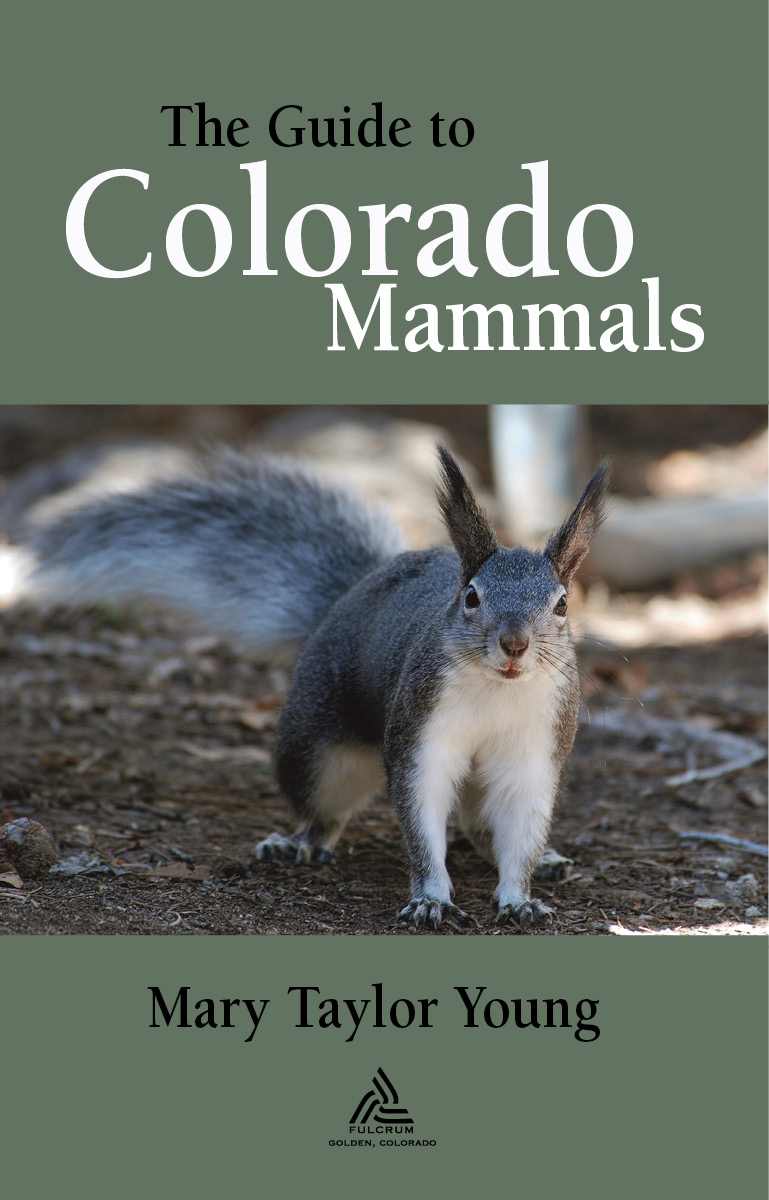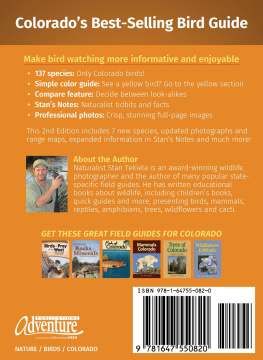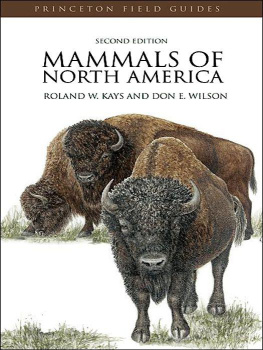

Text 2012 by Mary Taylor Young
Images as follows: Anne Elliot, 151; Ardea/Bevan, Brian/Animals Animals, 19; Berquist, Paul and Joyce/Animals Animals, 148, 156; Birgit Fostervold/Creative Commons, 205; Bob Gress, 12, 28, 72, 74, 75, 76, 78, 80, 81, 89, 95, 98, 99, 102, 103, 105, 106, 107, 111, 112, 119, 122, 126, 127, 130, 134, 138, 139, 142, 143, 147, 157, 160, 168, 172, 178, 180, 184, 185, 188, 194, 195, 200, 202, 204, 207, 208, 213, 214, 222, 234, 236, 268, 240, 244, 248, 250, 251; Chas and Elizabeth Schwartz Trust/Animals Animals, 117, 152; Christopher Taylor, www.kiwifoto.com, 154; Corey Raimond, 24, 25; Florean Fortescue/Wikimedia Commons, 164; Florin Chelaru/Creative Commons, 88; George Bryce/Animals Animals, 125; H. Zell/Wikimedia Commons, 165; Illg, Gordon and Cathy/Animals Animals, 124; James F. Parnell, 18; Jimmy Thomas/Creative Commons, 253; Joe McDonald/Animals Animals, 150; John and Gloria Tveten/KAC Productions, 26, 120, 136, 140, 141; Keith Williams/Creative Commons, 220; Kersti Nebelsiek/Wikimedia Commons, 228; Kevin Dempsey, 198; Kkstimer/Wikimedia Commons, 97; Mactombs/Wikimedia Commons, 91; Mary Taylor Young, 190; Mdf/Wikimedia Commons, 93; Merlin D. Tuttle, Bat Conservation International, www.batcon.org, 34, 35, 37, 38, 40, 41, 43, 44, 46, 47, 50, 51, 53, 54, 55, 58, 60; Michael Francis Photography/Animals Animals, 145; OSF/Cordano, Marty/Animals Animals, 144; Pamela and Bryan Wells, www.oakleaf.com, 170, 199; Raymond Mendez/Animals Animals, 158; Rick and Nora Bowers/KAC Productions, 137; Robert Barber, 94, 186, 218; Robert J. Erwin/Photo Researchers, Inc., 149; Sally King, National Park Service, iii, 109; Sam Fried/Photo Researchers, Inc., 101; Stan Tekiela, www.naturesmartimages.com, 123; Stephen Dalton/Photo Researchers, Inc., 23; Stephen J. Krasemann/Photo Researchers, Inc., 212; Terry Gray, 153; Tom Friedel/Wikimedia Commons, 66; Tom McHugh/Photo Researchers, Inc., 159; Utahcamera, 182; Vladimir Dinets, 22; Vladimirovich Albitsky/Wikimedia Commons, 116
All rights reserved. No part of this book may be reproduced or transmitted in any form or by any means, electronic or mechanical, including photocopying, recording, or by an information storage and retrieval systemexcept by a reviewer who may quote brief passages in a reviewwithout permission in writing from the publisher.
Library of Congress Cataloging-in-Publication Data
Young, Mary Taylor, 1955
The guide to Colorado mammals / Mary Taylor Young.
p. cm.
Includes bibliographical references and index.
ISBN 978-1-55591-583-4 (pbk.)
1. Mammals--Colorado. 2. Mammals--Colorado--Identification. I. Title.
QL719.C6Y68 2012
599.09788--dc23
2011045808
Printed in Korea
0 9 8 7 6 5 4 3 2 1
Design by Jack Lenzo
Cover image of Rocky Mountain bighorn sheep ( Ovis canadensis canadensis ) Bob Gress
Fulcrum Publishing
4690 Table Mountain Dr., Ste. 100
Golden, CO 80403
800-992-2908 303-277-1623
www.fulcrumbooks.com
Contents
Order Didelphimorphia
Order Soricomorpha
Shrews and Moles: Insect-eaters
Order Chiroptera
Bats: Winged Mammals
Order Cingulata
Armadillos: Armored Mammals
Order Lagomorpha
Rabbits and Relatives: Pikas, Rabbits, and Hares
Order Rodentia
Rodents: Gnawing Mammals
s
Order Carnivora
Carnivores: Meat Eaters
Order Perissodactyla
Odd-toed Hoofed Animals
Order Artiodactyla
Even-toed Hoofed Animals: Deer, Pronghorn, Bison, Goats, and Sheep
F
Acknowledgments
Thanks to Haley Berry, Faith Marcovecchio, Jack Lenzo, and all the folks at Fulcrum Publishing for their commitment to making this another great guide to Colorados outstanding natural heritage. Many thanks to Dave Armstrong, Professorus extraordinarius (and professor emeritus of ecology and evolutionary biology and environmental studies at the University of Colorado at Boulder), for his peer review of the manuscript.
Authors Note
The path of my life as a zoologist and nature writer was set during my childhood, when I was fortunate enough to be surrounded by the beauty and wild creatures of the Rocky Mountains.
I spent my summers at my grandparents cabin in Estes Park, literally next door to Rocky Mountain National Park. We had a view of Longs Peak across the valley and the giant rock beaver who, my granddad told me, was forever climbing toward the summit of the mountain. We awoke to mule deer peering in the windows and hummingbirds buzzing around the red-trimmed feeders; we spent the days chasing chipmunks across the boulders of Deer Mountain and the nights listening to coyotes howling in the dark.
My fascination with wildlife, and how each creature is adapted in its own way to its corner of nature, began in those days. I hope this book will help others discover and marvel at the diverse wild animals that inhabit our beautiful state and that, as a result, they will support the conservation of these animals and their habitats. Like that beaver relentlessly climbing Longs Peak, preserving our natural heritage is an ongoing job.
Introduction
What Is a Mammal?
Warm and furry . Those are probably the first two words most of us think of in connection with mammals. And they are two of the characteristics that define the animals grouped together in the class Mammalia.
The first mammals appeared about 200 million years ago. Small, shrewlike animals moving furtively around a world dominated by dinosaurs, they survived the environmental cataclysm that followed the asteroid impact that did in the dinosaurs. From that humble beginning, mammals diversified and dispersed globally. Today there are about 4,000 species of mammals worldwide, in habitats as diverse as the Antarctic Ocean and the rainforests of Borneo.
Characteristics of Mammals
Mammals are warm-blooded animals that generate their own internal heat through the metabolic processes of their bodies, and regulate it with an internal thermostat. Providing their own heat source allows mammals to be broadly distributed, inhabiting cold climates that are inhospitable to cold-blooded animals such as frogs and snakes.
Mammals are also covered by a protective coat of hair or fur in place of the scales of fish and reptiles and the feathers of birds. All mammals, even the cetaceans (whales and dolphins), grow at least a few hairs somewhere on their body at some point in their development.
Nearly all mammals give live birth . The young of fish, amphibians, reptiles, and birds hatch from eggs. (The monotremes, a group of primitive mammals that includes the duck-billed platypus, lay leathery eggs.)
The word mammal gives us a clue to another major characteristic of this animal group: they have mammae, or milk-producing glands. Mammals nurse their young on milk produced by the mothers body. This adaptation for extra care of the young ensures a higher survival rate. Interaction with a parent also offers an opportunity for young mammals to learn strategies and information beyond what is transferred to them genetically.
Like birds, mammals have a four-chambered heart , with separate systems for carrying oxygen-rich blood to the tissues and sending oxygen-depleted (but carbon dioxideladen) blood through the heart to be reoxygenated by the lungs. This efficient means of transporting heat, oxygen, and nutrients throughout the body allows mammals to have a high metabolic rate and keep active in spite of the environmental temperature.
Mammals have two sets of teeth . Young mammals develop an initial set of teeth, commonly called milk or baby teeth. These are eventually replaced by a permanent set of adult teeth.






